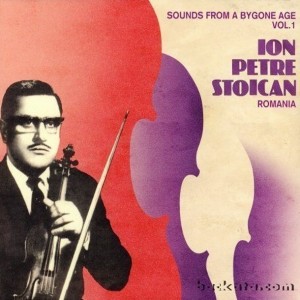 This record has quite a back-story. Ion Petre Stoican was a relatively unknown musician in the lively Bucharest scene of the 1970s. He had played professionally, particularly for weddings and such, in a port town for some 15 years, but the recording business was pretty much locked up by established families. But Stoican had caught a notorious spy in the 1960s and been promised an opportunity to make an album at the state-run studios, and in about 1977 he returned to Bucharest to call in his chips.
This record has quite a back-story. Ion Petre Stoican was a relatively unknown musician in the lively Bucharest scene of the 1970s. He had played professionally, particularly for weddings and such, in a port town for some 15 years, but the recording business was pretty much locked up by established families. But Stoican had caught a notorious spy in the 1960s and been promised an opportunity to make an album at the state-run studios, and in about 1977 he returned to Bucharest to call in his chips.
With the help of some other well-known musicians and the cultural authorities, he was able to enlist some of the top players in the country, including trumpeter Costel Vasilescu and Toni Iordache on cymbalom, the Balkan hammer dulcimer, in addition to a full band of violins, clarinets, accordion and bass viol. Iordache also put together the arrangements for the recording sessions, for about a dozen tracks of traditional dance music.
The music lives up to the story, too. This is fiery, joyous music obviously played by true professionals. The album is dominated by the rapid hora and sirba styles, with some forays into slower pieces now and again. On a typical track, the melody will first be played on cymbalom, or occasionally clarinet or accordion, with Stoican taking over on his violin by the second verse. Much of it has a jazzy, swinging feel to it – Stoican can definitely swing, and much of what Iordache plays on the cymbalom is obviously improvised, and sometimes even sounds almost like ragtime. Bassist Fane Negrila adds to the jazzy atmosphere with his rhythmic techniques, and trumpeter Vasilescu’s use of a mute adds another interesting texture.
With 15 tracks, the whole album is over in about 45 minutes; only one piece is over three minutes, the eight-minute tour-de-force song on track five “Ia-Ţi Mireasä Ziua Bunä, on which Stoican sings in a melismatic falsetto – very dramatic.
Authentic Romanian dance music is often quite hard to come by in the West. It has become quite popular in the past few years, but a lot of substandard stuff gets repackaged and foisted off on the unsuspecting public. This is the real thing, a slice of history that also seems completely timeless. Beautifully recorded on analog equipment, it is lovingly presented and packaged. Top-notch all the way around.
(Asphalt Tango, 2005)
